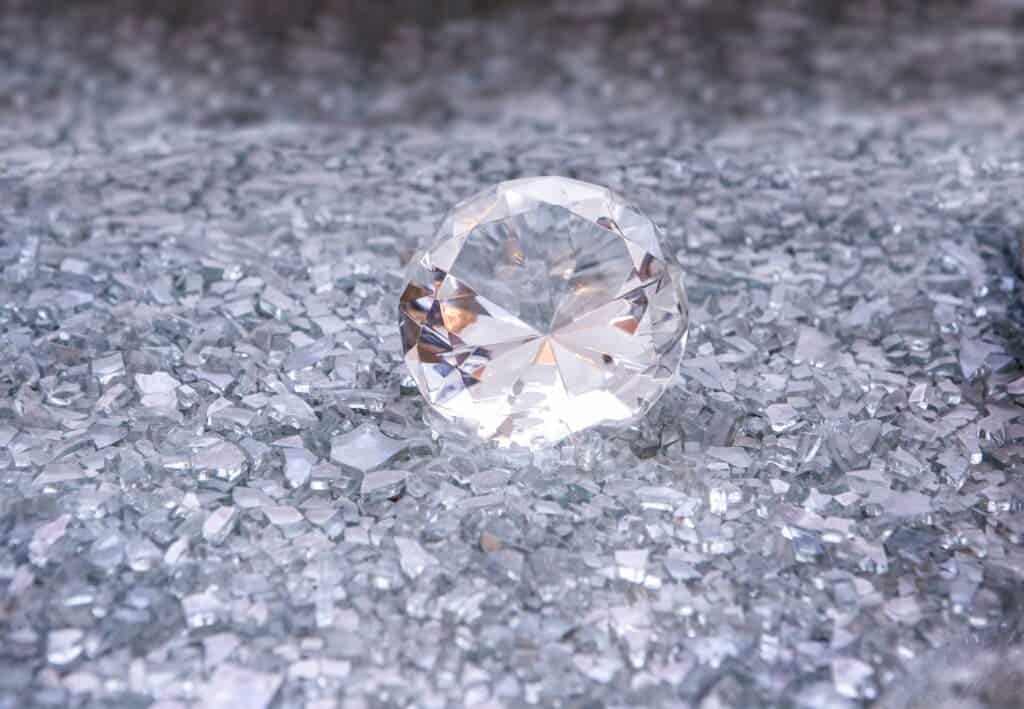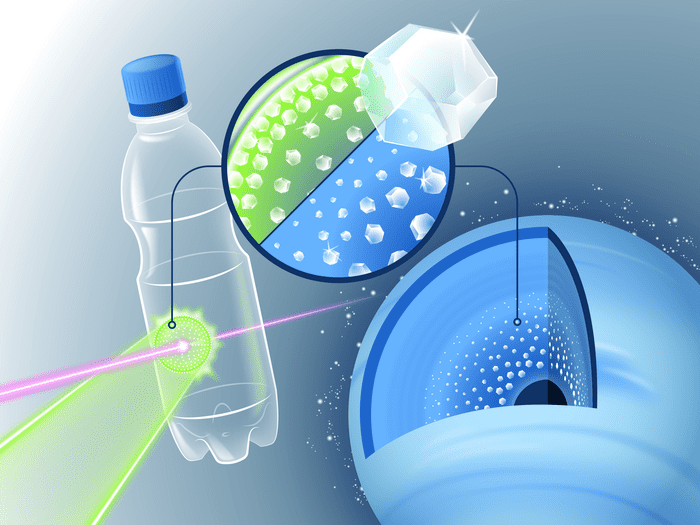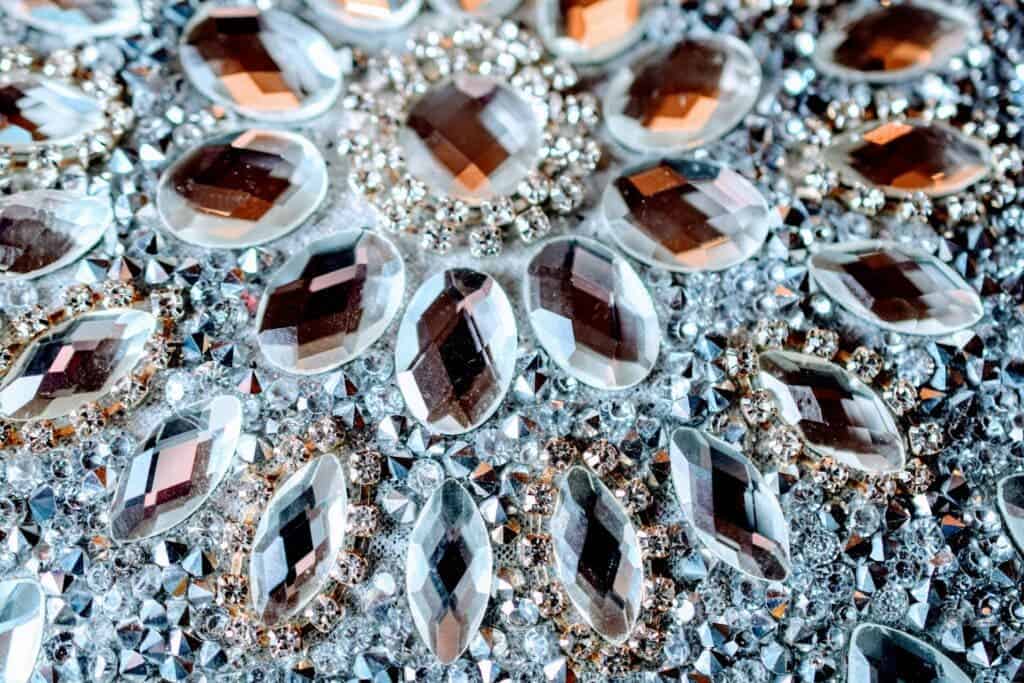A team of international researchers performed an experiment to recreate the conditions found in the deep interiors of planets Uranus and Neptune. Both planets are mostly made of icy rocks and ice-forming molecules, this is why they are also referred to as icy giants. During the experiment, the researchers discovered a technique for producing real nanodiamonds from ordinary PET plastic bottles and proved that the internal environments of icy giants give rise to diamonds.

PET or (polyethylene terephthalate) is a polymer used for producing commonly used plastic items such as lunch boxes, water bottles, product packaging, etc. It’s not exactly what you’d expect to find in the deep interiors of Uranus and Neptune, which are dominated by a complex mixture of light elements, such as hydrogen, carbon, and oxygen at extreme pressure and temperature conditions, but it’s a decent chemical replacement as it contains oxygen hydrogen and carbon in suitable proportions. Plus, PET is cheap and available.
So the researchers found PET plastic bottles a great tool to mimic the composition of icy giants in the laboratory, and they got to experimenting. They conducted an experiment that was jointly carried out by teams from France-based École Polytechnique school of engineering, Germany’s Helmholtz-Zentrum Dresden-Rossendorf (HZDR) laboratory, and the University of Rostock.
The technique that turns PET plastic into nanodiamonds
Uranus and Neptune are the coldest planets in our solar system, the surface temperature on these planets could go as low as -373 °F (-225 degrees Celsius). The atmospheric pressure in the deep interiors of icy giants is also believed to be a million times more than the pressure on Earth. To mimic the conditions of the deep interiors of the planets, researchers fired a powerful X-ray laser called the Linac Coherent Light Source (LCLS) at a piece of PET.

The laser fired ten flashes every second and instantly heated the plastic material up to a temperature of 10,832 °F (6000 degrees Celsius). Although the planets are cold on the outside, they’re hot on the inside, and their cores reach this temperature. When the laser hit the plastic bottle, a shockwave was also produced, compressing the plastic at a pressure equivalent to that found on Uranus and Neptune. The process resulted in the bursting out of diamonds from the plastic film to a nearby water tank.
Scientists employed the X-ray diffraction method (a technique that involves the use of X-rays to study crystals at atomic and molecular levels) to determine the formation of diamonds. The diamonds measured between 2 and 5 nanometers in diameter. When asked if this experiment really led to the formation of true nanodiamonds, Dominik Kraus, the professor of high energy density physics at the University of Rostock, told ZME Science:
“The nanodiamonds are indeed diamonds in terms of crystal structure. The same crystal structure as on many wedding rings, just a million times smaller. So yes, these are actual diamonds. On the short timescale of our experiments, they have not enough time to grow further. However, inside planets where we could have growth times of millions of years, the diamonds could be gigantic (km or larger).”
There is more than just diamonds to this research
The researchers also revealed that oxygen played an important role in the experiment. The gas promoted nanodiamond formation by causing rapid splitting of hydrogen and carbon atoms of the plastic film. The experiment also confirmed their previous theory which suggested that “diamonds literally rain inside the icy giants.” Moreover, the results from this study are not just applicable to the deep interiors of Uranus and Neptune but also to many other similar planets that exist in our galaxy.

Professor Kraus suggests their experiment points toward a very efficient and scalable way to produce nanodiamonds with specific dopants in large quantities. Such nanodiamonds doped with other elements like nitrogen can be used as “qubits” in quantum computing and quantum cryptography. He also believes that the diamond precipitation occurring inside icy giants may significantly shape the energy balance of these planets as the sinking diamonds release gravitational energy and heat up the planets’ interiors. Explaining further, Professor Kraus said,
“Planets like Uranus and Neptune, and slightly smaller, have been found to be the most abundant planets outside our Solar System. Understanding those planets will therefore also help to get further inside where life could exist outside our Solar System. A limiting factor is of course the short timescale (nanoseconds) when compared to chemical processes on planetary timescales (millions of years). Processes happening in nanoseconds will then certainly happen in millions of years.”
The researchers mentioned in their study that the experiment may have also resulted in the formation of superionic water (a state of water that exist at extreme temperature-pressure conditions). However, currently, they don’t have any evidence to prove the same and therefore, the next step in their research is to observe the presence of superionic water.
The study is published in the journal Science Advances.


